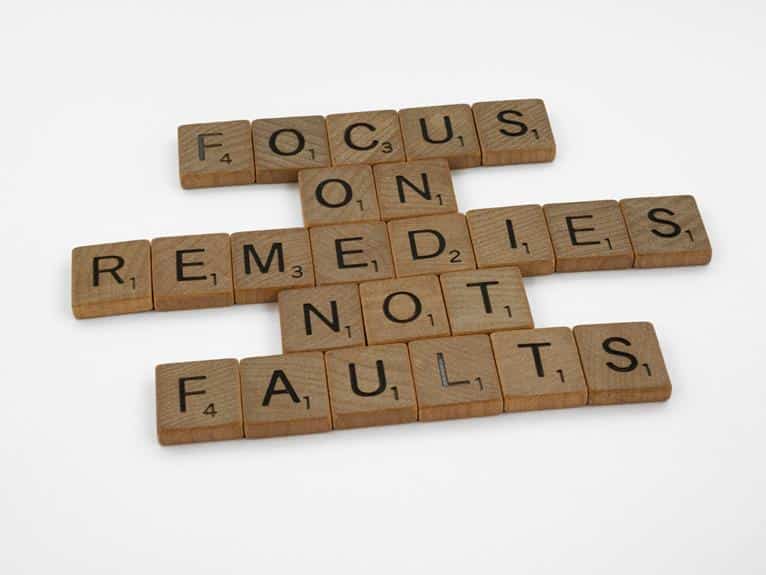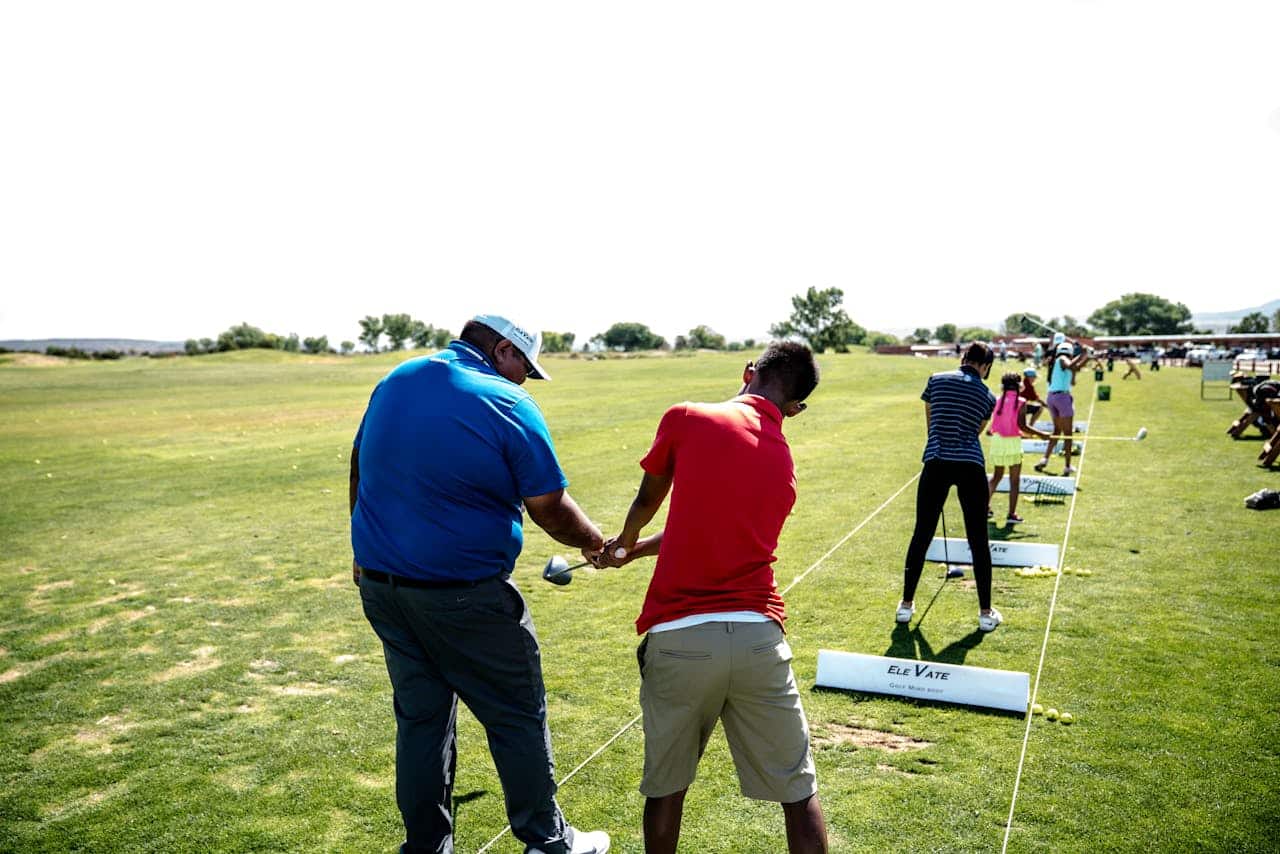
Often, the difference between a good round and a great round of golf lies in your ability to improve your short game around the greens. While long drives down the fairway can be impressive, it’s the finesse and precision within 100 yards that truly shave strokes off your scorecard.
Mastering the short game is essential for lowering your golf scores and enhancing overall performance on the course. Whether you’re facing challenging chips, delicate pitches, or crucial putts, refining these skills can dramatically transform your gameplay.
Statistics reveal that nearly 65% of shots during a typical round come from within 100 yards of the green. That’s an incredible chunk of your game dependent on mastering these often-overlooked aspects. Essentially, if you are looking to consistently lower your scores, focusing on developing a strong short game is non-negotiable.
Even professional golfers emphasize its importance. Phil Mickelson, known as one of the best short-game players in history, once said: “The short game determines who wins tournaments.” His words resonate deeply with amateurs and professionals alike.
A personal experience serves to underline this point further. I recall playing with an enthusiastic amateur who could drive impressive distances but struggled once he approached the greens. Despite his powerful drives, he ended up scoring higher due to poor chipping and putting skills.
On another occasion, I played with someone lesser in driving distance but impeccable around the greens; he managed to outscore his longer-hitting counterpart handily. This clearly illustrates how crucial a well-rounded short game is for anyone serious about their golf journey.
Understanding the Fundamentals
To improve your short game around the greens, it’s crucial to first understand what makes a good short game. Unlike the long game, which focuses on driving and full swings, the short game encompasses shots played within 100 yards of the green-primarily chipping, pitching, and putting. These shots require a delicate blend of touch, feel, and precision, as they often determine whether you save par or drop strokes.
Key components of a strong short game include mastering various types of shots such as chips, pitches, and putts. Chipping generally involves low-trajectory shots that roll out towards the hole. Pitching requires higher lofted shots aimed at stopping closer to where they land.
Meanwhile, putting demands an eye for line and speed to coax the ball into the cup in as few strokes as possible. Each type of shot is unique but shares common fundamentals like proper stance, grip, and swing mechanics.
Touch and feel play a huge role in excelling at the short game. Developing these skills allows you to control your shot’s distance and trajectory more effectively. Precision is just as important; making slight adjustments can drastically affect your outcome around the greens. To improve these aspects:
- Practice different types of chips with varied trajectories.
- Work on pitch shots with different clubs to gauge how each one reacts.
- Spend considerable time honing your putting stroke under various conditions.
By focusing on these fundamentals and understanding their intricate details, you’ll set a strong foundation for improving your overall short game performance.
Get the Right Equipment
Improving your short game around the greens starts with having the right equipment. Choosing the correct wedges and putters can make a significant difference in your performance. For instance, wedges come in various types including gap, sand, and lob wedges. Each type has its own pros and cons that cater to different situations on the course.
- Gap Wedges: Ideal for shots that are too long for a pitching wedge yet too short for a sand wedge.
- Sand Wedges: Essential for getting out of bunkers but also versatile enough for mid-range chipping.
- Lob Wedges: Perfect for high, soft landing shots over obstacles.
Selecting the right putter is equally crucial. Factors such as the putter’s weight, grip size, and alignment aid all play into how well you can control your putting strokes. Ensure you try multiple options to find one that suits your style and helps improve your short game around the greens.
Apart from clubs, other pieces of gear can contribute to short game excellence. High-quality balls designed for better spin and feel around the greens are essential. Gloves that offer a good grip without compromising flexibility are also vital as they ensure consistent swings. Finally, investing in practice tools like chipping nets or putting mats allows you to hone your skills even when you’re not on an actual golf course.
Chipping Techniques
To improve your short game around the greens, mastering various chipping techniques is essential. Chipping, unlike pitching or putting, requires a deft touch and a practical understanding of the ball’s behavior on different types of grass and terrain. One of the most versatile chip shots you can learn is the bump-and-run.
This technique involves keeping the ball low to the ground, allowing it to roll towards the hole like a putt after an initial brief flight. To execute a bump-and-run effectively, select a less lofted club such as a 7 – or 8-iron and adopt an open stance with weight distributed mainly on your front foot. Focus on making solid contact while maintaining a smooth rhythm in your swing.
Flop Shot: Elevate Over Obstacles
When you encounter obstacles like bunkers or need to stop the ball quickly on the green, a flop shot becomes invaluable. A flop shot aims to get significant height and minimal roll after landing. For this technique, use a highly lofted wedge (54-60 degrees).
Start by opening your clubface and aligning it left of your target (for right-handed golfers). Position yourself with an open stance and play the ball more forward in your stance than usual. During your swing, focus on maintaining an accelerated yet controlled follow-through, ensuring that your hands lead ahead of the clubhead at impact.
Checking Chips: Control Rollout Distance
Another crucial chipping strategy is mastering checking chips where you want more control over how much run-out distance you achieve post-landing. For this shot, use wedges with moderate lofts like gap wedges or sand wedges.
The setup involves positioning yourself squarely to your target but keeping weight predominantly on your leading foot for proper downward strike compression. Your objective should be to nip at the ball cleanly so that it bites upon hitting the green before rolling out controlledly toward its final destination.
Avoiding common mistakes is critical for refining these techniques; one frequent error is decelerating through impact which results in chunked shots or skulled hits sailing past targets uncontrollably-stay committed throughout each chip motion fully focused achieving precision every time aid greatly enhancing consistent success over extended practice timespan eventually transforming overall gameplay itself substantially.
Mastering the Pitch Shot
Pitch shots are crucial for reducing your strokes around the green. Typically used for distances of 20 to 50 yards, pitch shots enable you to control both trajectory and roll. Knowing when to opt for a pitch shot over a chip or a full swing can significantly impact your scorecard. Understanding situational use-like when you need to clear an obstacle and stop quickly on the green-will set you up for success.
To execute a proper pitch shot, begin with your setup. Position the ball in the center of your stance, leaning slightly forward with your weight anchored primarily on your front foot. This setup helps ensure a downward strike on the ball, promoting better loft and backspin.
Use an open clubface typically with a higher-lofted wedge like 54-58 degrees. During the swing, hinge your wrists early on the backswing but maintain minimal wrist action through impact; let your shoulders do most of the work.
Practice drills are invaluable for honing distance control and accuracy in pitching. One effective exercise is the ladder drill where you place targets (such as alignment sticks or towels) at various distances within pitching range.
Alternate hitting balls to each target while focusing on maintaining consistent tempo and technique. Another beneficial drill involves using three different wedges (pitching wedge, gap wedge, sand wedge) and practicing with each at identical distances; this increases versatility in shot selection and helps improve your short game around the greens.
| Aspect | Key Points |
|---|---|
| Setup | Ball centered, weight forward, open clubface |
| Swing Mechanics | Early wrist hinge with minimal action through impact |
| Practice Drills | Ladder drill for distance control; alternate wedges |
Putting
Understanding how to read greens can significantly improve your short game around the greens. Greens are rarely flat, so recognizing slopes and anticipating how they will influence ball movement is essential for making accurate putts. Start by observing the overall layout of the green from various angles.
Gauge any uphill or downhill slopes and pay attention to subtle breaks that could alter your putt’s direction. Practice makes perfect with green reading; over time, you’ll develop a sixth sense for interpreting these nuances.
A variety of practice drills can enhance both your putting stroke and mental focus on the course. One effective drill involves placing tees in a circle around the hole at various distances to practice breaking putts from multiple angles.
Another drill focuses on distance control: place markers at intervals along a straight line and aim to stop your putts as close to each marker as possible without overshooting it. Utilize visualization techniques where you mentally map out each successful putt before you take it-envisioning success can help build confidence and consistency in your stroke.
By ingraining these fundamentals into your routine, you’ll find yourself sinking more putts and lowering your score significantly, ultimately taking strides to improve your short game around the greens.
Mental Game
Golfers often overlook the importance of the mental game when working to improve their short game around the greens. However, maintaining focus and confidence is crucial for executing precise shots under pressure. Embracing psychological strategies can drastically enhance your performance, even in high-stakes situations.
Psychological Strategies to Stay Calm and Composed
Pressure scenarios, such as needing a flawless chip or putt to save par, can undermine a golfer’s composure. Techniques like deep breathing and mindfulness exercises allow players to stay calm and centered. Focusing on your breath for just a few moments before each shot can help clear your mind of distractions, creating a controlled environment where thoughtful execution thrives. Remembering that every golfer faces similar pressures can normalize the stress, effectively reducing its impact on performance.
Importance of Routine and Consistency in Your Short Game
Developing a consistent routine is another vital aspect of strengthening your mental fortitude around the greens. A set pre-shot routine helps transition from deciding on the right club or shot type to executing it with confidence. Whether it’s visualizing your target line, taking practice swings, or checking your alignment-details in these routines contribute significantly to overall consistency. This predictability lessens uncertainty, providing mental reassurance that fosters better outcomes under varying conditions.
Visualization Techniques to Enhance Performance
Another powerful tool involves visualization techniques. Before you approach any short-game scenario-be it chipping out of rough or sinking a tricky downhill putt-take time to vividly imagine successfully completing it.
Picture every detail: how far back you’ll take the club, the crisp contact with the ball, its trajectory toward the hole, and finally hearing it drop into the cup. Visualization mentally rehearses success, instilling belief and conviction that translates into improved performance when it’s time for action on course.
By integrating these mental strategies into practice sessions and tournaments alike, golfers will consistently find themselves better equipped to navigate high-pressure shots around the green successfully. These techniques are not mere add-ons but essential skills for anyone seriously aiming to improve their short game around the greens.
Practice Makes Perfect
Structured Practice Routines for Chipping, Pitching, and Putting
To truly improve your short game around the greens, it’s essential to have a structured practice routine. Start with chipping drills that focus on varying distances and trajectories. For example, set up targets at different distances using stakes or hula hoops and practice hitting your chip shots into these zones. Vary your club selection from wedges to 9-irons to get a feel for how each club impacts the shot.
When practicing pitching, pay close attention to your setup and swing mechanics. Use alignment sticks to ensure you are correctly aligned towards the target. Incorporate distance control drills by placing targets at multiple distances-say 30, 50, and 70 yards-then switch between them randomly. This will better simulate on-course conditions where you need to adapt quickly.
Putting should include routines that emphasize consistency in stroke as well as distance control. A popular drill is the “ladder drill,” where you place balls at increments of two feet away from the hole and putt each ball in succession without missing. This helps build confidence in holing out from various distances, which is crucial for lowering your score.
Importance of Varied Practice to Mimic on-Course Scenarios
One common mistake golfers make is practicing from perfect lies all the time; it’s equally important to practice from imperfect situations if you wish to improve your short game around the greens effectively. Make sure you’re practicing chip shots from thick rough, bare lies, and even sand traps occasionally. Adjusting your stance and grip for each lie will help you become versatile and ready for any course condition.
For putting, practice on greens with varying speeds if possible or use different parts of the putting green to experience diverse slopes and breaks. Imagine different scenarios such as uphill putts or downhill sliders that require distinct touches and reads. Implement pressure situations by challenging yourself with “must-make” putts that simulate competition settings.
Additionally, integrate some random elements into your practice sessions-like dice rolls or card draws-to determine which type of shot you’ll work on next. This randomness mimics real golf more closely where no two shots are exactly alike.
Tools and Apps That Can Help Track Progress and Improvement
Taking advantage of technology can significantly enhance your practice effectiveness when aiming to improve your short game around the greens. Various golf-specific apps can track stats like proximity to the hole for chips or number of putts holed during a session. Apps such as GolfShot or Arccos Caddie offer advanced metrics that help analyze every aspect of your short game.
Portable launch monitors can be another valuable tool in assessing shot data like spin rate, launch angle, and carry distance for chips and pitches. Using this information enables you to make precise adjustments in technique leading to better performance.
Lastly, keep a detailed practice log either digitally or in a notebook where you record drills completed, progress made, areas needing more focus, and any eureka moments during practice sessions. Reviewing this log regularly helps identify patterns in improvement while ensuring you’re not neglecting any component of your short game.
Course Management
When it comes to course management, the choices you make around the greens can be the difference between a birdie and a bogey. Evaluating risk versus reward is particularly crucial in your short game. For instance, opting for a high-risk flop shot over a safer bump-and-run might not always be worth it, especially under pressure.
Consider your lie, the green’s layout, and current playing conditions before making your decision. Always ask yourself whether the potential gain outweighs the possible downside.
Strategic tips for different types of greens and lies can also enhance your short game performance. On fast greens with severe slopes, it’s often better to play conservatively to avoid rolling past the hole by significant distances.
Conversely, on slower or flat greens, you might afford to take more aggressive lines toward the cup. The same variability applies to different lies; tightly mowed fringes near the green require precise control and touch, while fluffy rough might necessitate more loft and a steeper angle of attack.
Adjusting your short game strategy based on course conditions is another key aspect of intelligent course management. On windy days, keeping shots low might reduce unpredictability and offer better control. In wet conditions where the ground is soft, expect less roll-out after landing and adjust accordingly by aiming closer to your target zone. Using these strategic adaptations can significantly improve your short game around the greens.
| Course Condition | Short Game Strategy |
|---|---|
| Fast Greens | Play conservatively to avoid long rolls |
| Slow/Flat Greens | Aggressive lines toward the cup are viable |
| Tight Lies | Require precise control and touch |
| Fluffy Rough | Necessitate more loft and steeper attack angle |
Common Short Game Mistakes and How to Fix Them
One of the most frequent errors golfers encounter around the greens is the dreaded chunked shot. This occurs when the clubhead hits the ground before making contact with the ball, causing a loss of distance and control. The key to solving this issue lies in proper weight distribution and maintaining a steady head position throughout your swing.
To address chunking, focus on keeping your weight slightly forward and ensuring your body remains steady until after impact. Practicing with an alignment stick can help reinforce the correct stance and prevent early lifting.
Another prevalent mistake is hitting thin shots, where the ball is struck too high on its surface, leading to low trajectory and inadequate spin. This often results from swinging too quickly through impact or not allowing the wrists to release properly.
A useful drill to counteract thin hits involves practicing with a weighted club or resistance band to facilitate a smoother, more controlled swing. Slow-motion practice swings can also aid in building muscle memory for precise wrist action and improved overall mechanics.
Lastly, issues with inconsistent putting often stem from improper alignment or misjudging speed and break. To refine putting accuracy, it’s essential first to establish a consistent pre-shot routine that includes aligning your putter face squarely to the target line.
Additionally, work on developing a fluid stroke by using drills like the gate drill-a setup where two tees are placed slightly wider than your putter’s width to ensure you make clean, straight strokes through them. Regularly practicing green reading can drastically improve your ability to interpret slopes and speeds effectively.
| Common Mistake | Suggested Fix |
|---|---|
| Chunked Shots | Maintain steady head position; keep weight forward. |
| Thin Hits | Practice with weighted club; smooth wrist action. |
| Inconsistent Putting | Establish a consistent routine; use gate drill for stroke accuracy. |
Addressing these common mistakes with targeted practice will inevitably improve your short game around the greens, boosting both confidence and performance during play. Embracing drills and exercises tailored to fixing specific issues you encounter can transform frustrating rounds into ones brimming with solid scores and enjoyable gameplay.
Conclusion
Improving your short game around the greens is more than just a technical endeavor-it’s a journey that demands dedication, practice, and a love for the game. By committing to refining your chipping, pitching, and putting skills, you’re taking meaningful steps towards lowering your scores and achieving more consistency in your play.
Remember the essential components we’ve discussed: from selecting the right equipment to mastering various shot techniques and maintaining mental composure. Each element plays a vital role in shaping a strong short game.
Consistent practice is indispensable for progress. Structured routines that incorporate diverse drills can help simulate on-course scenarios and develop muscle memory. Whether it’s honing your pitch shots with specific distance control exercises or fine-tuning your putting stroke through alignment drills, each effort contributes to building confidence in your short game. The key takeaway is this: improvement is not an overnight phenomenon but rather a gradual process of continuous learning and adaptation.
Ultimately, enjoying golf comes down to playing it well-and there’s no greater satisfaction than seeing tangible improvements in your performance on the greens. As you persistently apply the strategies outlined in this guide, you’ll witness substantial enhancements not only in your scorecard but also in your overall experience of the game.
So stay patient, keep practicing diligently, and cherish every moment you spend perfecting your craft. Mastering the short game can indeed transform both how you play and how much you enjoy golf as a whole.
Frequently Asked Questions
How to Get Better Around the Greens?
To get better around the greens, it is essential to focus on technique and practice. Improving your touch and feel for various shots can be accomplished by dedicating time to short game drills and exercises.
Spend ample time practicing chipping, pitching, and bunker shots to develop a consistent stroke and confidence in your ability. Additionally, understanding how different clubs work in varied situations can help you make better shot selections.
How Do I Get More Spin Around the Greens?
Increasing spin around the greens involves fine-tuning your equipment and mastering specific techniques. Using wedges with fresh, sharp grooves can significantly enhance spin capabilities.
Moreover, focusing on a clean strike at impact will ensure optimal friction between the ball and clubface. Experimenting with different types of golf balls that are designed to produce more spin can also make a considerable difference.
How Do You Pitch Better Around the Green?
Pitching better around the green requires consistent practice and focusing on proper fundamentals. Work on maintaining a smooth tempo through the swing while ensuring your weight is favorably distributed towards the lead foot for stability.
Keeping your hands ahead of the clubhead at impact will help achieve lower trajectory and greater control over distance. Incorporating different lofted clubs will also aid in adapting to various distances.
How Do I Fix My Short Game YIPS?
Fixing yips in your short game starts by addressing any mental barriers that might be causing inconsistency or anxiety during play. Taking deep breaths before shots and visualizing successful outcomes can ease tension. Technically, shifting attention to where you want the ball to land rather than obsessing over mechanics often proves beneficial as well.
How to Chip Around the Green in Golf?
Effective chipping around the green involves selecting appropriate clubs depending on lie conditions and target distances required for each scenario.




